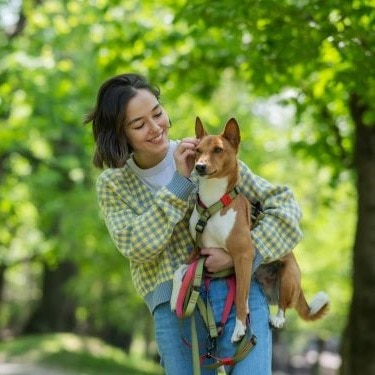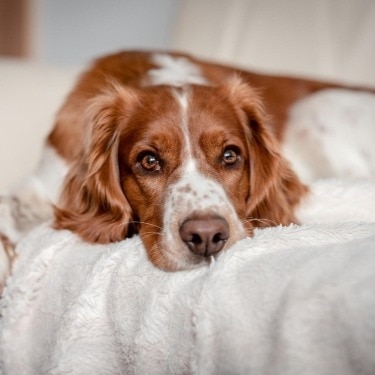
-
Find the right food for your petTake this quiz to see which food may be the best for your furry friend.Find the right food for your petTake this quiz to see which food may be the best for your furry friend.Featured products
 Adult Chicken & Barley Recipe Dog Food
Adult Chicken & Barley Recipe Dog FoodSupports lean muscle and beautiful coat for adult dogs
Shop Now Hill's Science Diet Adult Chicken & Beef Entrée Dog Food
Hill's Science Diet Adult Chicken & Beef Entrée Dog FoodChicken & Beef Entrée in a delicious loaf with complete & balanced nutrition to help keep adult dogs active and healthy
Shop Now Adult Large Breed Chicken & Barley Recipe Dog Food
Adult Large Breed Chicken & Barley Recipe Dog FoodSupports healthy joints, lean muscle, and beautiful coat for large breed dogs
Shop NowFeatured products Adult Turkey & Liver Entrée Cat Food
Adult Turkey & Liver Entrée Cat FoodPrecisely balanced nutrition with the delicious taste of minced turkey & liver to help fuel the energy needs of cats during the prime of their life
Shop Now Senior Vitality Adult 7+ Tuna & Vegetables Stew
Senior Vitality Adult 7+ Tuna & Vegetables StewImproves Everyday Ability to Get Up & Go
Shop Now Adult Tender No Corn, Wheat, Soy Chicken & Vegetables Stew Cat FoodShop Now
Adult Tender No Corn, Wheat, Soy Chicken & Vegetables Stew Cat FoodShop Now -
Dog
- Dog Tips & Articles
-
Health Category
- Weight
- Food & Environmental Sensitivities
- Urinary
- Digestive
- Joint
- Kidney
-
Life Stage
- Puppy Nutrition
- Adult Nutrition
- Senior Nutrition
Cat- Cat Tips & Articles
-
Health Category
- Weight
- Skin & Food Sensitivities
- Urinary
- Digestive
- Kidney
-
Life Stage
- Kitten Nutrition
- Adult Nutrition
Featured articles The Science Behind Our Love for Pets
The Science Behind Our Love for PetsLearn the scientific reasons why we have such strong connections with our pets, and what science says about the love between humans and our furry friends.
Read More What Is Littermate Syndrome? Pet Adoption Guide
What Is Littermate Syndrome? Pet Adoption GuideLearn more about littermate syndrome in dogs and cats and how to successfully navigate adoption and early socialization processes.
Read More How to Properly Mix Wet & Dry Pet Foods
How to Properly Mix Wet & Dry Pet FoodsAn Orange cat eating from a bowl filled with mixed food
Read More -


Anatomically speaking, a torn ACL in dogs is the same condition in humans, which happens when the anterior cruciate ligament of the knee suffers a loss of its integrity. In dogs, this condition is referred to as a cranial cruciate ligament tear (CCL) tear or, more generally, as cruciate ligament disease, explains the American College of Veterinary Surgeons. While many treatment options are available, the tibial-plateau-leveling osteotomy (TPLO) surgery is the most common approach to treating this condition.
Comparing Dog CCL Tears to Human ACL Tears (& Why They Happen)
While a torn ACL in humans is largely a result of traumatic events, a torn CCL in dogs is more likely to happen as a result of a progressive weakening of the ligament. As the ligament degenerates, small tears can occur, eventually leading the ligament to rupture and causing instability in the joint and an inability to successfully bear weight.
With each progressive tear, the joint becomes more inflamed. This process ultimately results in osteoarthritis.
Signs of a Torn CCL
A torn CCL in dogs may seem to come on suddenly, but in most cases the ligament has been weakening for months. Once limping is observed, pet parents tend to notice a pattern of chronic intermittent lameness lasting for 48 to 72 hours. The limping can be severe or mild.
Here are additional signs that your dog might have a torn CCL:
- Mild to severe weakening of the thigh muscles in the affected limb
- Thickening of the bony part of the affected knee
- A decreased range of motion in the affected knee
- An asymmetric sitting posture in which the lower part of the limb is angled away from the body
Some of these signs can be very subtle to nonexistent. Overt pain is not a common sign of a torn CCL. While the knee may be uncomfortable to move, lameness may be due to instability rather than discomfort.
Risk Factors
While it's impossible to know whether any individual dog will grow up to tear their CCL, some dogs are more likely to suffer CCL disease than others. Affected dogs are typically middle-aged and hail from larger breeds. According to research published in the journal Acta Veterinaria Brno, breeds at a higher risk of tearing their CCL include Labrador retrievers, Rottweilers, American cocker spaniels, chow chows, German shorthaired pointers, American Staffordshire terriers and Brazilian mastiffs. Some research indicates that this is one of the few conditions that may be more prevalent among mixed-breed dogs.
Interestingly, dogs who are neutered or spayed are more likely to experience a torn cruciate ligament. Additionally, females appear slightly more predisposed to the condition than males. Excess weight is also a risk factor.

Diagnosis & Treatment for CCL Injuries
Vets diagnose a torn CCL through physical examination, joint manipulation and X-rays. In most cases, dogs must be sedated for the exam and radiography to take place.
While TPLO surgery is the most common recommendation for a dog with a torn CCL, there are other surgical options, including:
- Simitri Stable in Stride
- Tibial tuberosity advancement (TTA)
- CORA-based leveling osteotomy (CBLO)
A great many dogs, however, will never receive surgery. Research in The Journal of Bone & Joint Surgery has shown that surgery may not even be indicated. Consequently, conservative approaches are now being more closely studied. These include:
- Weight loss
- Strict rest
- Anti-inflammatory medication
- Nutritional supplements
- Properly balanced nutrition formulated for joint health and weight loss
- Physical therapy
If a CCL rupture is diagnosed, your veterinarian will provide you with their recommendation for the best course of action, and whether surgery will be necessary or not.


Tasty Tips
TPLO Surgery
The TPLO surgery involves the use of an implant to stabilize the knee. A cut is made in the shinbone, which is rotated slightly to change the natural angle of force on the knee. A specially devised plate is then applied to the outside of the knee to stabilize the entire mechanism.
It's important to recognize that the TPLO surgery, as with all surgical procedures, is best undertaken by a surgeon who performs many similar procedures. Finding a board-certified surgeon who frequently performs the TPLO surgery will likely yield a better outcome for your dog.
Recovery from a TPLO surgery can be surprisingly swift. Some dogs are able to bear weight almost immediately. All patients benefit from physical therapy. Most dogs will need to take pain medicine and all require an avoidance device, like a cone, to prevent them from interfering with the surgical site. Be strict about limiting your dog's activity level after the surgery. Implant failures, in which the internal mechanism breaks down, are common in active, unsupervised patients. It's also important to understand the underlying cause of the tear in the first place. For instance, overweight dogs puts additional stress on your dog's joints, so your veterinarian will likely recommend that your dog loses weight to avoid potentially rupturing the CCL again. Listen carefully to their advice on how to help your dog lose weight in accordance with their recovery. They might also recommend physical therapy to help strengthen the joint again.
Long-Term Care for Dogs With Cruciate Ligament Disease
It's important to recognize that all dogs with cruciate ligament disease will suffer from osteoarthritis. Some dogs may require long-term physical therapy and lifelong medical management, but good nutrition is often sufficient to manage the condition.
High-quality nutrition is crucial. Your vet may recommend that your dog take nutritional supplements, like fatty acids, glucosamine and/or chondroitin. These are often included in high-quality therapeutic dog foods specifically formulated for joint health.


Dr. Patty Khuly is an award-winning veterinarian known for her independent thinking, her spirited pet advocacy, her passion for the veterinary profession, and her famously irreverent pet health writing.
Dr. K is an honors graduate of both Wellesley College and the University of Pennsylvania School of Veterinary Medicine. She received her MBA at The Wharton School of Business as part of the prestigious VMD/MBA dual-degree program. She now owns Sunset Animal Clinic, a veterinary practice in Miami, Florida.
Related products

Supports healthy joints, lean muscle, and beautiful coat for large breed dogs

Chicken & Barley Entrée in a delicious loaf with great taste and precisely balanced nutrition to support 5 essential building blocks for lifelong health

Chicken & Beef Entrée in a delicious loaf with complete & balanced nutrition to help keep adult dogs active and healthy

Supports lean muscle and beautiful coat for adult dogs
Related articles

Wondering where can I buy a dog? Consider adoption and explore the pros and cons of adopting a dog from a breeder versus an animal shelter.

Discover how the field of dog science is giving us more and more insights into the inner workings of our furry best friends.

Learn how to help keep your dog's immune system in tip-top shape, including nutritional immune system support for dogs and other strategies.

Your dog's coat and skin are a big part of your dog's overall health. Ensure you keep your dog's coat healthy, by following these simple tips.

Put your dog on a diet without them knowing
Our low calorie formula helps you control your dog's weight. It's packed with high-quality protein for building lean muscles, and made with purposeful ingredients for a flavorful, nutritious meal. Clinically proven antioxidants, Vitamin C+E, help promote a healthy immune system.
Put your dog on a diet without them knowing
Our low calorie formula helps you control your dog's weight. It's packed with high-quality protein for building lean muscles, and made with purposeful ingredients for a flavorful, nutritious meal. Clinically proven antioxidants, Vitamin C+E, help promote a healthy immune system.

